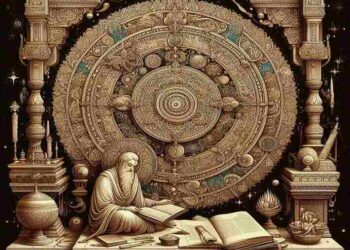Table of Contents
ToggleIntroduction
Understanding Dystopian Fiction And Its Popularity With its grim future visions, dystopian fiction has become one of the most popular and read genres in modern literature, drawing readers in from all over the world. These stories, which frequently depict countries with totalitarian governments, environmental degradation, or technology dominance, act as both warnings and windows into contemporary fears.
Though its popularity has grown recently, especially among young adult readers, the genre has literary origins that date back to some of the first criticisms of human nature and society.
It is common to compare dystopian fiction to its more optimistic counterpart, utopian fiction, which conjures up idealized civilizations. In contrast to utopias, which imagine idealized societies, dystopias imagine societies where oppression, inequality, and human misery are at their height.
These pieces usually act as a platform for social and political criticism, examining the possible repercussions of current problems including power concentration, environmental deterioration, and monitoring. As a result, dystopian literature is more than just a genre; it’s a prism that helps us comprehend our hopes, desires, and anxieties for the future.
What is Dystopian Fiction?
Dystopian fiction is characterized by its depiction of societies in which individuals live under oppressive, often nightmarish conditions. These societies are typically marked by authoritarian governments, extreme inequality, environmental disasters, or technological control that strips people of their freedoms and humanity.
Dystopian stories usually focus on protagonists who struggle to survive, challenge the status quo, or resist the forces that seek to control them. These protagonists often find themselves up against seemingly insurmountable odds, but their struggles serve to highlight the moral, ethical, and political dilemmas faced by their societies.
The term “dystopia” was first coined in the 19th century as the opposite of “utopia,” a term that was popularized by Sir Thomas More in his 1516 book Utopia. While utopian societies are idealized worlds where everyone lives in harmony and happiness, dystopian societies are defined by their flaws, injustice, and suffering.
The dystopian genre is concerned with exposing the darker sides of human nature, political systems, and technological advances. Its pessimistic outlook serves as a stark reminder of what could happen if humanity veers too far off course.

Key Characteristics of Dystopian Fiction
Several key characteristics define dystopian fiction. While these elements may vary from one work to another, they are commonly present in many of the genre’s most famous examples. Some of the most notable features of dystopian fiction include:
1 Totalitarian Governments and Oppression: Many dystopian novels center around oppressive political regimes that control every aspect of life. These governments often monitor citizens closely, restrict free speech, and eliminate dissent. The authorities in these societies are often depicted as cruel and manipulative, using fear and propaganda to maintain power. Examples include George Orwell’s 1984 and Margaret Atwood’s The Handmaid’s Tale.
2 Dehumanization and Loss of Individuality: In dystopian societies, individual rights and freedoms are often severely restricted or outright eliminated. People are frequently treated as mere cogs in the machine of the state, stripped of their personal identity and autonomy. This is evident in works like Aldous Huxley’s Brave New World, where people are conditioned from birth to fulfill specific roles in society, or in Fahrenheit 451 by Ray Bradbury, where books and independent thought are forbidden.
3 Environmental Collapse: Many dystopian novels feature apocalyptic or post-apocalyptic settings where the environment has been ravaged by climate change, pollution, or war. In these worlds, the survival of humanity is often at risk, and the consequences of humanity’s negligence toward the environment are fully realized. For instance, in Cormac McCarthy’s The Road, the earth has become a barren wasteland following an unspecified catastrophe, while The Water Knife by Paolo Bacigalupi explores a future where water scarcity leads to conflict and societal breakdown.
Read More
4 Technological Control: Dystopian fiction frequently explores the dangers of unchecked technological advancement. In many stories, technology is used by the ruling powers to control and surveil citizens, often at the expense of personal freedoms. Neuromancer by William Gibson and The Matrix (although a film) are iconic examples of the genre’s exploration of a technologically dominated world.
5 Resistance and Rebellion: One of the central themes of dystopian fiction is the struggle against oppressive systems. Protagonists in these novels often find themselves fighting against seemingly insurmountable odds, trying to escape or dismantle the systems that hold them captive. These characters are often depicted as symbols of hope and resistance, even in the face of overwhelming oppression. The Hunger Games by Suzanne Collins and V for Vendetta by Alan Moore are prime examples of stories about rebellion and resistance against a corrupt system.
The Historical Evolution of Dystopian Fiction
Dystopian fiction has evolved over the centuries, reflecting the changing concerns and anxieties of society. While the roots of dystopian literature can be traced back to works like Jonathan Swift’s Gulliver’s Travels (1726), which satirized social and political issues, it was in the 20th century that the genre truly began to take shape as a distinct literary form. The horrors of war, totalitarian regimes, and technological advancement gave rise to some of the most enduring works of dystopian fiction.
Early Roots: The Rise of Utopian Thought
The earliest works that can be considered precursors to dystopian literature were often utopian novels, which imagined ideal societies free from poverty, crime, and injustice. However, as the world became more industrialized and socially complex, writers began to turn their attention to the potential dangers of such societies. This shift in thinking gave birth to dystopian fiction as a critique of the promises of utopian thought. Works like Samuel Butler’s Erewhon (1872) and H.G. Wells’s The Time Machine (1895) explored the darker side of societal progress, imagining worlds where technological advancements had gone awry or social hierarchies had become even more oppressive.
Read More
20th Century: The Age of Totalitarianism
The early to mid-20th century saw the rise of some of the most influential dystopian works, many of which were shaped by the political climate of the time. The horrors of World War I, the Russian Revolution, the rise of fascism, and the advent of World War II created a climate of fear and uncertainty that dystopian authors sought to capture.
George Orwell’s 1984 (1949) is perhaps the most iconic work of the genre. Set in a totalitarian society where the government exercises absolute control over its citizens, Orwell’s novel explores themes of surveillance, propaganda, and the loss of individuality. Similarly, Aldous Huxley’s Brave New World (1932) presents a world where people are controlled not by fear and oppression, but by pleasure and consumerism.
The Cold War era also produced a wealth of dystopian fiction, as writers grappled with the possibility of nuclear war and the global struggle between capitalism and communism. The works of authors like Ray Bradbury, Kurt Vonnegut, and Philip K. Dick explored themes of existential crisis, alienation, and the threat of authoritarianism.
Late 20th Century to Present: Dystopia and Popular Culture
In the late 20th and early 21st centuries, dystopian fiction expanded beyond the literary world into films, television, and video games. The genre gained immense popularity, particularly among young adults, as works like The Hunger Games (2008) by Suzanne Collins, Divergent (2011) by Veronica Roth, and The Maze Runner (2009) by James Dashner became massive cultural phenomena. These works combine elements of dystopia with action, adventure, and romance, appealing to a generation of readers who are increasingly concerned about issues such as environmental collapse, political corruption, and social inequality.
The genre’s popularity also coincides with the rise of social media and the increased surveillance culture that characterizes contemporary society. Many readers find dystopian stories relatable, as they reflect real-world fears about the erosion of privacy, government control, and the impact of technology on our lives.
Why Dystopian Fiction Is So Popular
Several factors contribute to the enduring popularity of dystopian fiction. One of the main reasons is the genre’s ability to engage with contemporary fears and anxieties, offering a space for readers to confront the darkest possibilities of the future. In times of political unrest, economic instability, or environmental crises, dystopian fiction provides a means of understanding and grappling with the consequences of current societal trends.
Additionally, dystopian stories often appeal to a desire for empowerment. In many of these novels, the protagonists rise up against oppressive systems, offering hope that even in the darkest of times, change is possible. The rebellious spirit in these stories resonates with readers who may feel disillusioned by the status quo or powerless in the face of overwhelming challenges.
Finally, the genre’s popularity is fueled by its flexibility. Dystopian fiction can take many forms, from gritty, realistic depictions of authoritarian regimes to fantastical, far-future settings. It allows authors to explore a wide range of themes, from the dangers of technological advancement to the psychological effects of living in an oppressive society.

Conclusion
One of the most popular and enduring literary subgenres in modern times is dystopian fiction. By offering a prism through which to examine political systems, human nature, and societal anxieties, these books provide important insights into the modern world. Whether it takes the shape of a bleak depiction of a totalitarian government, an environmental catastrophe, or a technologically driven future civilization, dystopian fiction never fails to enthrall readers and provoke thought-provoking debates about humanity’s future.
Dystopian fiction will continue to play an important role in literature for years to come because of its capacity to connect with modern audiences, particularly as global challenges like inequality, climate change, and authoritarianism continue to influence our society. These pieces inspire us to consider our current course and the kind of world we wish to leave for future generations by pushing us to consider the worst-case scenarios and face society’s darkest aspects.
Read More
FAQ
1. What defines dystopian fiction?
Dystopian fiction is characterized by its portrayal of societies where oppressive systems of government, technological control, environmental decay, or social inequality have created nightmarish conditions for individuals. The genre often explores themes of resistance, survival, and the loss of freedom.
2. Why is dystopian fiction so popular?
Dystopian fiction resonates with readers because it reflects contemporary societal fears and anxieties, such as political repression, climate change, and technological control. The genre also offers stories of resistance and rebellion, providing a sense of empowerment for readers who may feel disillusioned by the world around them.
3. How does dystopian fiction reflect real-world concerns?
Dystopian fiction often acts as a cautionary tale, imagining the worst-case scenarios of current political, social, and environmental trends. By highlighting the potential consequences of these trends, dystopian novels serve as a warning and encourage readers to critically engage with contemporary issues.
4. What are some key examples of dystopian fiction?
Some of the most famous examples of dystopian fiction include George Orwell’s 1984, Aldous Huxley’s Brave New World, Ray Bradbury’s Fahrenheit 451, Suzanne Collins’s The Hunger Games, and Margaret Atwood’s The Handmaid’s Tale. These works explore a range of dystopian themes, from government surveillance to environmental collapse.
5. What themes are commonly explored in dystopian fiction?
Dystopian fiction commonly explores themes of oppression, resistance, technology, environmental degradation, social inequality, and the loss of individual autonomy. These themes reflect concerns about the abuse of power, the erosion of civil liberties, and the consequences of unchecked progress.
Read More
Related
Why Dystopian Fiction Speaks To Modern AudiencesIn "Literature"
The Rise Of Eco-Literature In A Changing WorldIn "Literature"
How Sci-Fi Literature Predicts Future RealitiesIn "Literature"
















